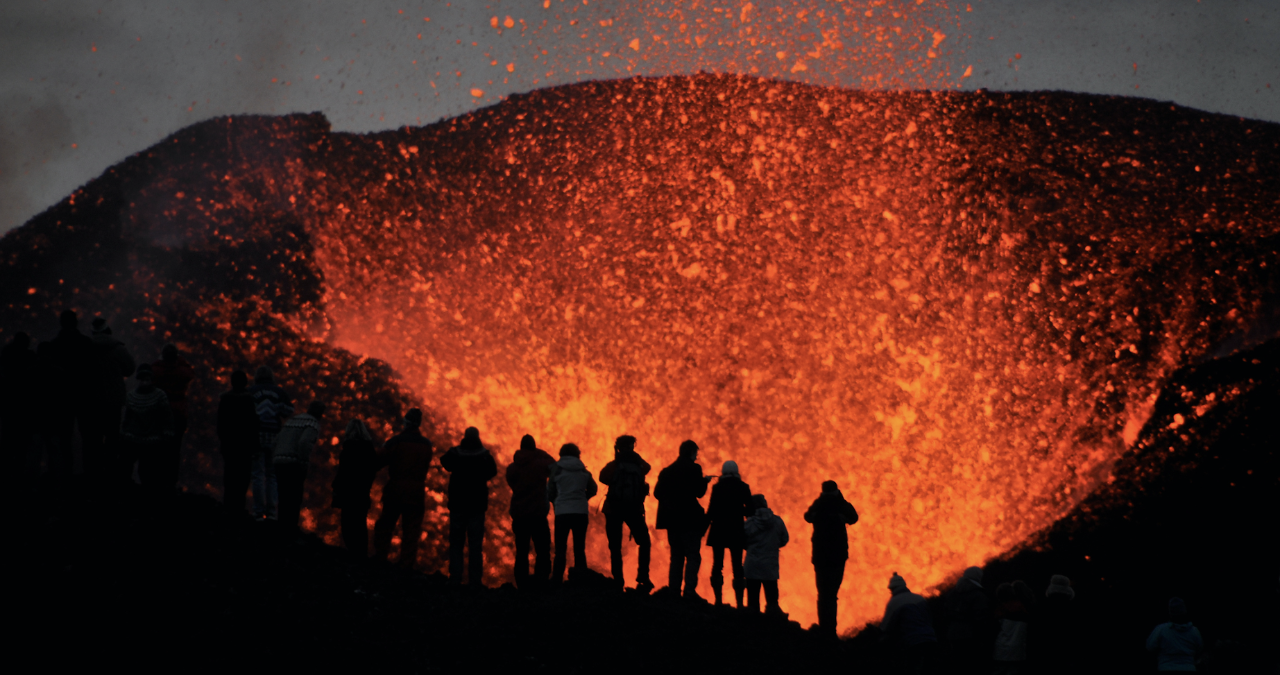
The Washington Post: Iceland volcano erupts again. Is it normal?
UC geochemist talks about latest eruption outside Grindavik
The Washington Post turned to a geochemist at the University of Cincinnati to explain the significance of the third volcanic eruption in as many months outside Grindavik, Iceland, this week.
The eruption at Grindavik closed the Blue Lagoon, a popular tourist attraction, and several surrounding roads and damaged some plumbing infrastructure supplying hot water to 30,000 people.
Department of Geosciences Professor Thomas Algeo in UC's College of Arts and Sciences told the Washington Post that the latest eruption occurred in one of several volcanic regions on the island.
The series of eruptions at Grindavik could be a sign that this western region, which has been quiet volcanically since the 1200s, could see eruptions for decades or centuries to come, he said.
Among other research projects, Algeo has studied the geological and astronomical cataclysms that led to the largest mass extinctions on Earth.
This week's eruption sent lava fountains 260 feet into the air. They're providing a wealth of information to geoscientists, Algeo told the Post.
“The eruptions are providing new insights into how mid-ocean ridge spreading systems behave,” Algeo said. “Iceland is about the only place in the world where an oceanic spreading center rises above sea level, making direct observations possible. Scientists are gaining new insights into how magma moves and is redistributed in such volcanic systems.”
Read the Washington Post story.
Featured image at top: Featured image at top: Iceland's Eyjafjallajökull volcano erupts in 2010. Photo/TrueCapture

UC Professor Thomas Algeo says the latest volcanic eruption in Iceland is providing valuable information to geoscientists. Photo/Andrew Higley/UC Marketing + Brand
Related Stories
News Cincinnati loved in 2025
January 2, 2026
The story of prohibition bootlegger George Remus was among WLWT's favorite segments in 2025. UC Law Professor Christopher Bryant spoke with journalist Lindsay Stone about Remus using a temporary insanity defense during a murder trial.
What to know about this year’s big tax changes
January 2, 2026
Local 12 reported that taxpayers can expect some major changes this tax season. Gary Friedhoff, adjunct instructor at the University of Cincinnati’s Carl H. Lindner College of Business, recently spoke to Local 12 about how to avoid surprises.
Study finds police officers face higher long-term health risks
January 2, 2026
J.C. Barnes, a University of Cincinnati professor, is interviewed by Spectrum News about new research showing that the physical and psychological demands of law enforcement can contribute to earlier deaths.
